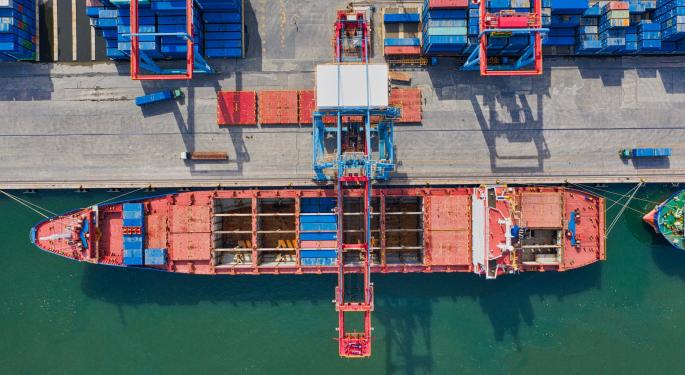
Pandemic, supply chain, and more — how quickly is the shipping industry rebounding after global difficulties?

COVID-19 took the world to a near standstill, slowing down major sectors, including the transportation sector. According to a report by Statistica, the global airline industry lost an estimated revenue of $370 billion in 2020 alone. The shipping industry was also disrupted in the same year with $350 million being lost each week, according to the International Chamber of Shipping (ICS).
As the situation calms down and the world slowly gets back to its previous status quo before the pandemic emerged, so is the transport sector recovering from a coronavirus sucker punch. One company that is optimistic about the future of dry bulk transportation is Seanergy Maritime Holdings Corp. (NASDAQ: SHIP). Seanergy, listed on the Nasdaq since 2008, is a provider of dry bulk shipment services throughout its state-of-the-art fleet of Capesize vessels. The company boasts as the only pure-play Capesize vessel owner publicly listed in the U.S. capital markets. A Capesize vessel could not pass through the Panama and Suez canals due to its big size of 170,000-210,000 deadweight tonnage (dwt) and had to go around the Capes of Good Hope and Horn to conclude a trip, thus the name Cape-size.
The Shipping Industry
The global shipping industry is hoping to make a strong comeback as the global demand for goods and raw materials surges and the global supply chain that collapsed due to COVID-19 increases. The industry is making the highest daily revenues since the financial crisis of 2008, according to Clarkson Research Services, Ltd
The container shipping division is witnessing rates spilling to all-time high records, and the whole industry is rising. The cost of shipping a 40-foot steel container from China to Europe is now at over $14,000, a 500% increase from last year.
The world’s largest container shipping line, A.P. Moller-Maersk A/S (NASDAQ Copenhagen: MAERSK), commonly known as Maersk, posted revenue of over $14 billion in the second quarter of 2021, most likely because of the massive rebound in demand.
The dry bulk market has also seen a huge boom in 2021. In the third quarter of the year, freight rates were the highest in a decade due to the high demand for raw materials, the low vessel supply and the congestion caused by COVID-19 protocols and weather conditions. The Platts TCE index — which measures daily revenues of dry bulk vessels across all sizes — was averaging around $50,057 per day in September. This figure is the highest ever since the index was launched in November 2019. Capesize daily revenues trended even higher, reaching $87,000 in the beginning of October.
Sailing Ahead?
Seanergy holds a total of 17 Capesize vessels, including the recent M/V Dukeship. In total, the 17 capesize vessels have an average age of 11.5 years and a cargo-carrying capacity of approximately 3,011,083 dwt. 2021 was a year of expansion and growth of the Company’s fleet by more than 70%.
Seanergy became a signatory to the Call To Action for Shipping Decarbonization, a global alliance of 200 industry leaders aimed to decarbonize international shipping by 2050 and support “greener” shipping. Some of the industry’s key players that are part of the coalition include Carnival Corp. NYSE: CCL), Hapag-Lloyd AG (FWB: HLAG) and A.P. Moller-Maersk A/S.
The preceding post was written and/or published as a collaboration between Benzinga’s in-house sponsored content team and a financial partner of Benzinga. Although the piece is not and should not be construed as editorial content, the sponsored content team works to ensure that any and all information contained within is true and accurate to the best of their knowledge and research. This content is for informational purposes only and not intended to be investing advice.
